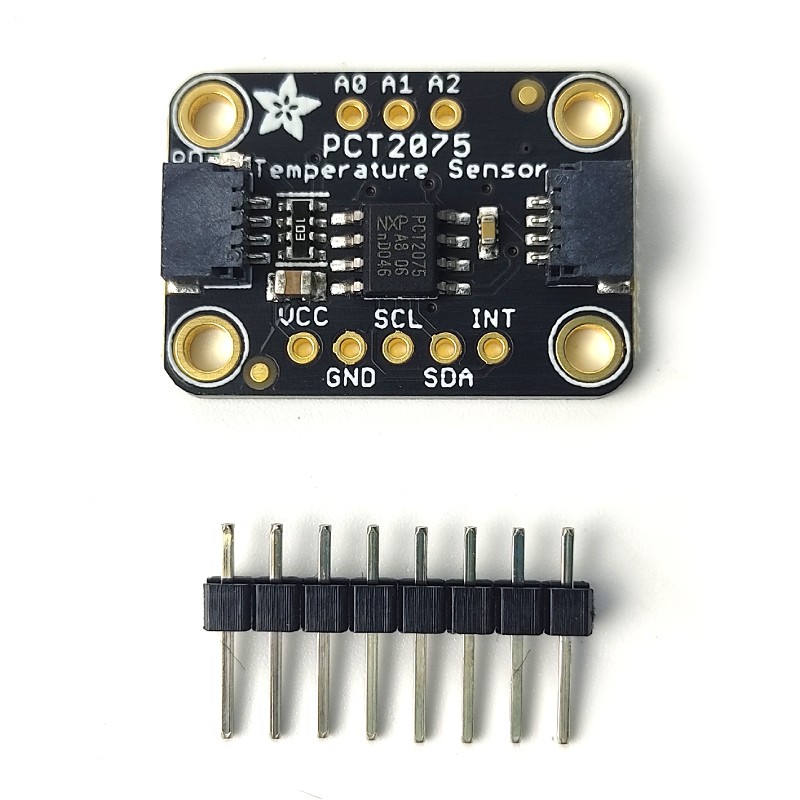Your shopping cart is empty!
Adafruit PCT2075 Temperature Sensor - STEMMA QT / Qwiic
- Brands Adafruit Code: SN-SQ-PCT2075
The Adafruit PCT2075 Temperature Sensor is a 'code compatible' drop-in replacement for a very common I2C temperature sensor, the LM75. Compared to the LM75, however, the 11-bit ADC in the PCT2075 provides more precise measurements when compared to the LM75's 9-bit ADC. Additionally, because the PCT2075 allows the address pins to work in three states (high, low, floating), you can have 27 PCT2075s on the same bus as opposed to only 8 for the LM75. Now you can finally measure the individual temperatures of the tentacles of three octopuses instead of just one!
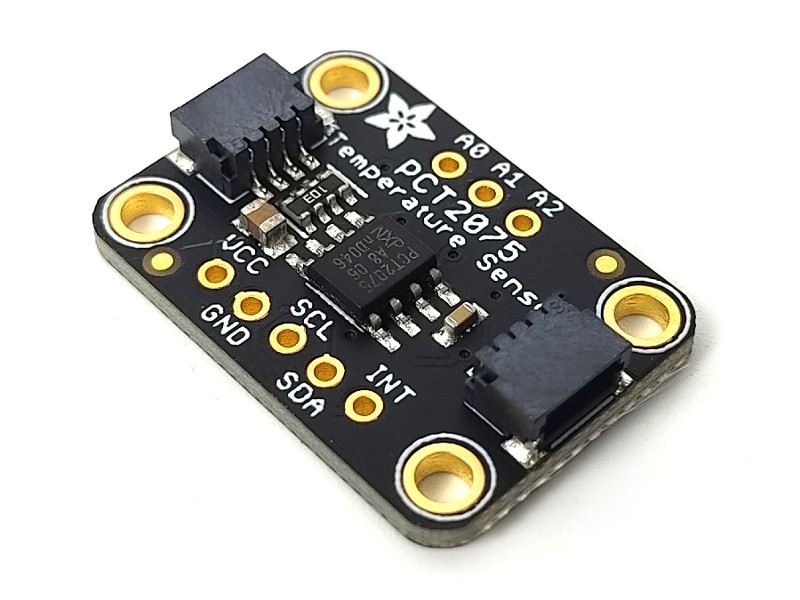
Otherwise, the two sensors are the same. The PCT2075 will report temperature and allow you to set a high-temperature threshold that the sensor will compare to the current temperature and raise an alert when the current temperature exceeds the threshold. There are also a few (metaphorical) knobs to twist to change the alerting and measurement behavior.
As with all Adafruit breakouts, we've done the work to make this handy temperature helper super easy to use. We've put it on a breakout board with the required support circuitry and connectors to make it easy to work with, and is now a trend we've added SparkFun Qwiic compatible STEMMA QT JST SH connectors that allow you to get going without needing to solder. Just use a STEMMA QT adapter cable, plug it into your favorite micro or Blinka-supported SBC and you're ready to rock!
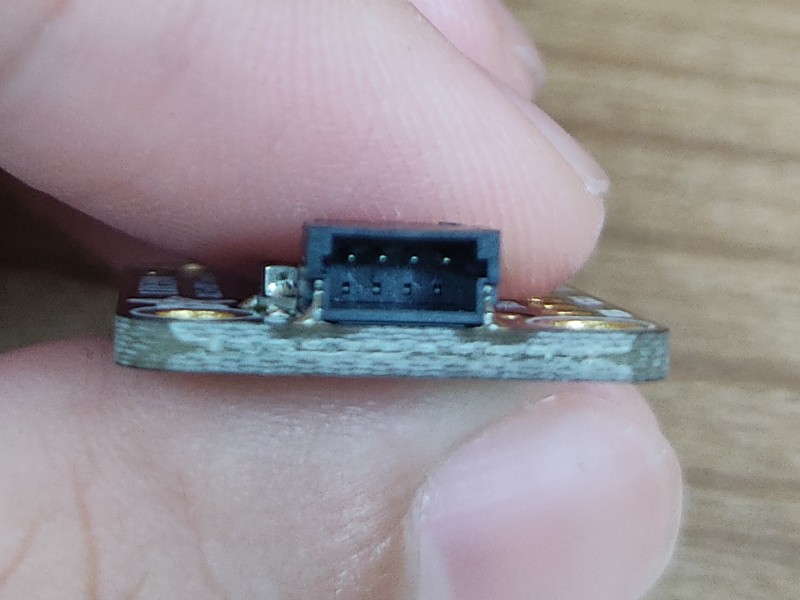
To know more about STEMMA QT, watch this video:
The PCT2075 is a handy and inexpensive temperature sensor that does one thing well. Try adding one to your project and have it keep an eye on the temperature and let you know when things get hot - or cold!
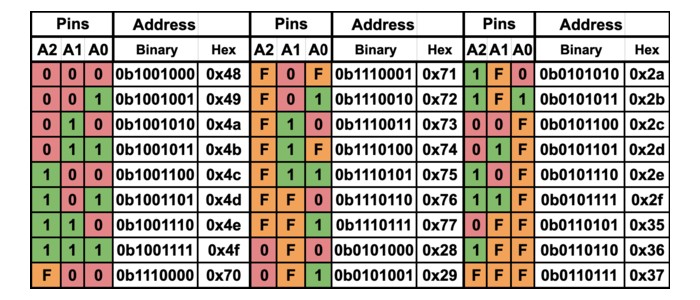
For a more permanent address selection, you can use the solder jumpers on the back of the breakout board to connect the address pins to GND or VCC.
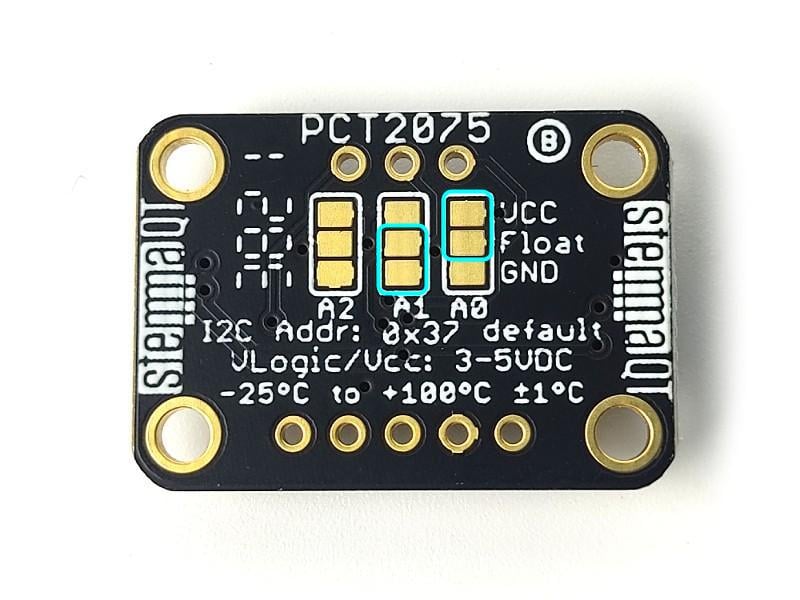
All you need to do is bridge the "Float" pad to either the VCC or GND pad for one or more of the address pins. In the picture above if you bridged the solder pads that are circled, you would pull A0 high to VCC and A1 low to GND. Referring to the table above this would set the address of the breakout to 0x72
